Colonel Ruslan Miroshnychenko, known by his call sign ‘Santa’, spoke with The Ukrainian Week about the formation of the 2nd International Legion, its strategic establishment in the Serebryansky Forest, and the challenges it faced in combat. With 25 years of experience in peacekeeping operations and a commitment to reforming the Armed Forces in line with NATO standards, Ruslan offers his perspective on the evolving landscape of military engagement.
***
— You’ve been with the 2nd International Legion of Defence of Ukraine since September 2022 and have led it since November of the same year. What do you consider the unit’s greatest achievement?
— To tell you the truth, the unit is still being formed, but I’d like to highlight what we’ve accomplished so far and what we take pride in.
Establishing the battalion under such challenging conditions has been no easy feat. As an international unit, our staffing relies heavily on the availability of volunteers. The influx of personnel largely depends on our visibility, recruitment efforts, and the overall image of the International Legion. People tend to gravitate toward environments that are transparent and predictable, where conditions are favourable, and leadership is accessible to every service member.
Our first significant achievement has been creating such an environment. Our officer corps, all our services, and unit commanders prioritise engagement with our personnel. We describe our battalion as people-centered. If anyone has questions or concerns, they can approach their commander at any time. From the moment a legionnaire joins us, we ensure they fully understand their role and what to expect.
Before signing the contract, we make sure to explain exactly what new recruits can expect. Honesty is key.
I’m not a fan of bold claims like “We guarantee a salary of 150,000 hryvnias.” That’s simply misleading. Such promises often come from units trying to lure in candidates without any real commitment. If you promise that amount, you better be prepared to deliver.
The reality is that there’s a base salary, plus additional allowances for being in the mission area and even more for being in active combat zones. The 150,000 figure is achievable only when you’re consistently on the front lines or engaged in ongoing assaults.
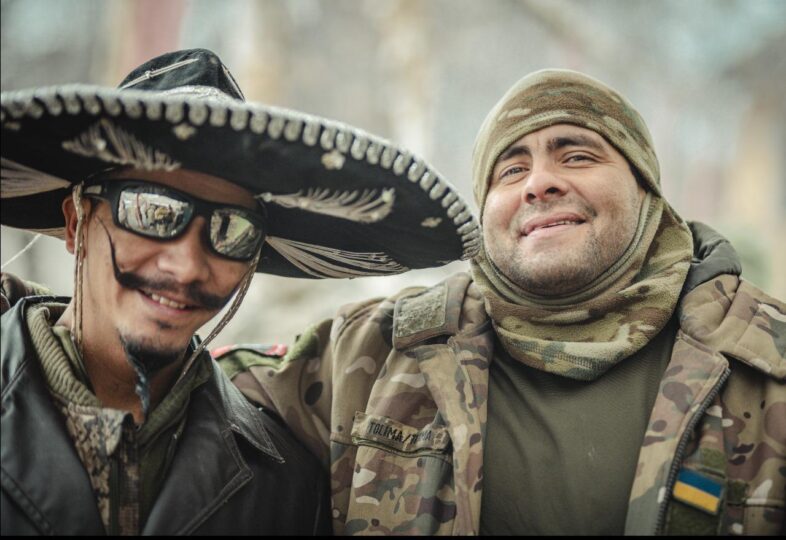
Photo: Oleksandr Zakletskyi.
We’ve worked hard to establish a transparent system. We don’t make promises we can’t keep. We inform recruits that our work is extremely dangerous. Before signing, each person receives a document detailing their rights and responsibilities, available in both English and Spanish. A significant portion of the International Legion consists of Spanish-speaking recruits—at one point, they made up 70% of our unit.
Interestingly, many of the guys who left us earlier due to fatigue are now coming back. That speaks volumes about the trust they have in us.
We’ve also set up an informal support service within the unit. When a legionnaire is wounded, they’re never abandoned. We keep track of their whereabouts and ensure they receive the support they need. Our psychologists visit them, and the primary goal of this service is to guarantee that every legionnaire gets comprehensive medical care. Communication is key here; a wounded soldier can feel isolated from the unit, so we work to bridge that gap.
There are many injured, and our support service has its hands full. We’ve also built a network of volunteers to assist us, which is another significant achievement. The guys know that the battalion truly cares for them.
— How many legionnaires have served in the unit?
– We began actively forming the battalion at the start of 2023. Before that, from September to December 2022, staffing wasn’t a priority, as the focus was on the 1st International Legion. It took a significant effort on my part to persuade the command of the Ground Forces of the Armed Forces of Ukraine that we could establish the 2nd International Legion, especially since we already had enough foreign volunteers at that stage.
I believe they listened because I successfully built the organisational core during that time—the headquarters and half of the first company—staffed with veterans I had fought alongside in battles for Lysychansk and Siversk.
You can’t keep legionnaires waiting too long in a specific recruitment area. If you keep promising them, “We’ll go fight in a month or three,” they’ll terminate their contracts and join another unit. That’s why I prioritised forming one company first and conducting intensive coordination. I quickly realised we couldn’t afford to waste time and needed to send the company to the mission area. Through the Commander of the Ground Forces, I proposed to the Commander-in-Chief the formation of a tactical group.
In northern Ukraine, we designated a mission area, and in April, the group began executing combat orders. They have been performing effectively ever since, and when a group completes missions with almost no losses, that’s something to be proud of.
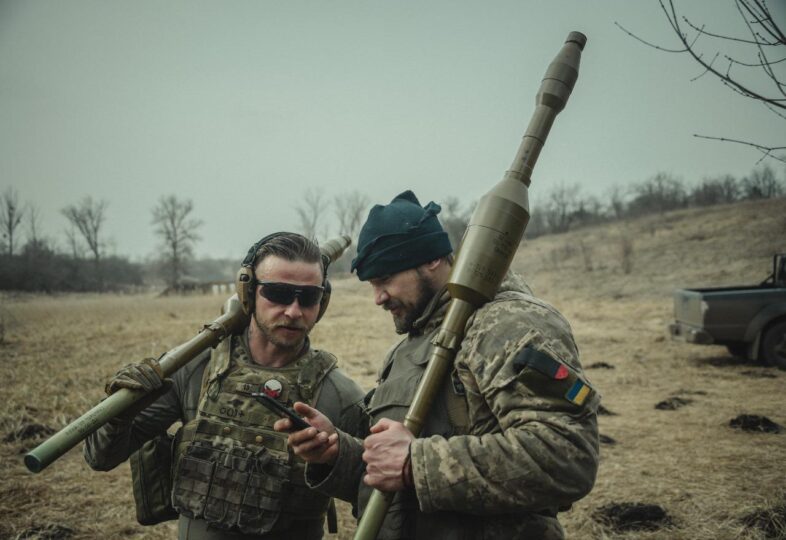
Photo: Oleksandr Zakletskyi.
— Can you describe the first battle the 2nd International Legion faced in Donbas?
– When we arrived in the Serebryansky Forest, we were under the command of the 95th Brigade, which had assault tasks on June 25, 2023, to reclaim lost positions. Two of my assault groups participated in these operations. While they completed their objectives, we unfortunately suffered some losses. I then suggested to the 95th Brigade that we halt further assaults to prevent more casualties.
Instead, I proposed finding a weak spot in the defence line of the mechanised brigade we supported and building our stronghold from there. Initially, it was just a section-level position, but as we received reinforcements, it evolved into a platoon stronghold and, eventually, a company stronghold. We established this in areas that the brigade could no longer hold or in the gaps between their observation posts, which were about 100–150 meters apart.
I built a fully fortified stronghold with bunkers and communication trenches in these gaps. This was a collaborative effort between the foreign fighters and our guys. For example, the Colombians were excellent diggers. I’d heard that Georgians typically don’t dig, but they surprised me by doing a great job as well.
When survival is on the line, you dig. Our stronghold received recognition from the command for its quality—the trenches were built to the correct depth and configuration, and the fire system was optimal. None of the enemy’s attempts to assault our positions were successful; their infantry assaults consistently failed.
— When did you face your biggest challenges?
– It all started in December 2023 when Russian artillery shelling intensified—either they had more shells or their aim had improved. As we were expanding, the enemy noticed that we were building a stronghold. That’s when we lost our company commander, Yuriy Savchuk. Every loss is painful, but this one shocked everyone. Yuriy was truly the soul of the battalion.
Then came spring, and from April to the end of summer, and things really got tough. Russians brought in reinforcements. Before that, their assaults on our positions were more like probes, occurring about once a month. But by April and May, they began using artillery and multiple rocket launchers with great precision, targeting one position after another. They started with the easier targets on the right flank of the brigade we were attached to, then moved on to my right flank and began their assaults.
We regularly repelled these attacks. On July 6, 2024, we faced three assault groups, and we effectively annihilated them. At that point, we overheard enemy radio communications saying, “Don’t assault these furious Ukrainians anymore; it’s not worth losing manpower. Just destroy them with barrel artillery.” And that’s exactly what they began to do.
July was likely the darkest month for the 2nd International Legion. Our losses increased significantly. As a volunteer battalion, everyone becomes part of our family, so these losses were deeply felt.
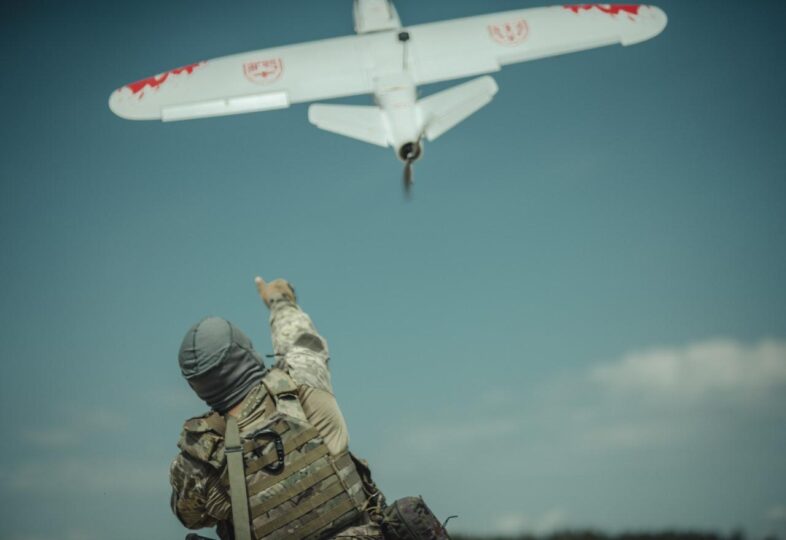
Photo: Oleksandr Zakletskyi.
— What are some positive memories you have from that time?
– I remember in November 2023 when I visited our positions. I wanted to check on my Colombians, so I walked in—and it was eerily quiet. The guys were on guard. As I entered the bunker, one of them opened his eyes and said, “Santa, you’re in my dreams.” He looked like he had seen a ghost! I shouted that the enemy was advancing, and he instantly jumped up, alert and ready.
One of my fondest memories is how we celebrated Christmas. Volunteers brought us the Bethlehem flame, which we shared with everyone in the buildings. We distributed treats and sang carols together. It was a heartwarming moment. I even wore a Santa hat and handed out gifts, along with lighters featuring the legion’s emblem. We also managed to build our own training ground, which really excited the guys.
Victories are important, especially when we manage to inflict losses on the enemy. A fighter needs even a small win to feel confident about pushing back against the enemy.
One story that has become legendary in our ranks is about a fighter who captured a prisoner. When he spotted the Russian soldier, he grabbed his rifle but thought it was too risky to take a sniper shot since they were so close. The enemy soldier had simply gotten lost; he believed he was among his own and even asked for some water. They offered him a drink, and he approached, saying, “Thirsty? Yeah. We work during the day and drink at night.” That’s how the International Legion made its first capture.
I also cherish the teamwork among our battalion units. The infantry in the trenches know they have mortar support, which keeps the enemy at bay. The same goes for the automatic grenade launchers. To spot threats in time, we rely on aerial reconnaissance. Established communication between all units is essential; we operate like clockwork. Plus, we have FPV drones for deliveries, which adds another layer of capability.
— With representatives from over 30 countries in the battalion, each speaking different languages and coming from diverse traditions, how do you manage to find common ground?
– I like to joke that the International Legion feels like a big international kindergarten. It took some time for the Alpha and Charlie companies to start working well together. Alpha includes Ukrainians, Belarusians, Georgians, and Azerbaijanis, who understand each other well. Charlie consists of English and Spanish speakers. At first, there were some tensions during rotations, especially when someone didn’t clean up after themselves.
We decided to have both groups work together during rotations, and that’s when the brotherhood in the trenches really began to develop. The Colombians learned from the Ukrainians, and vice versa, while the Georgians brought valuable experience from the Abkhazia conflict. Some Ukrainians have been fighting since 2014, and Americans and Brits, although combat-ready and eager, are still adjusting to trench warfare, which is a new experience for them.
The camaraderie extends beyond combat, too—they often visit each other and host foreign cuisine nights. Colombians whip up rice with meat, Americans fire up barbecues, Ukrainians make borscht and dumplings, and Georgians prepare shashlik and lobio.
It’s heartwarming to see them bond and learn from one another. Our fighters have even picked up a few Spanish words, while Colombians now swear and thank us in Ukrainian. Witnessing this multinational family come together is fantastic. They support each other in the trenches, striving to be their best selves, and when we lose someone special, it’s a tragedy that resonates throughout the entire battalion.
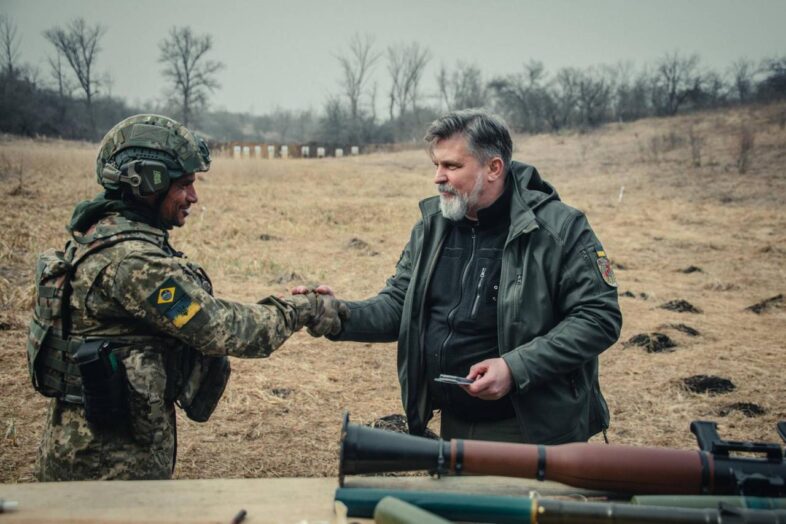
Photo: Oleksandr Zakletskyi.
— What drives foreigners to fight for Ukraine?
– First and foremost, no one will openly admit they joined for the money—that’s only natural. Most say they came to help. However, those who are primarily motivated by financial rewards don’t tend to stay long. It’s simply not enough to risk your life and face injury every day; those in it for the money often leave within a month or two once they see the harsh realities of the conditions.
The ones who remain are driven by values. They express a desire to punish the injustices committed by the Russians, saying, “We’ve witnessed their atrocities, and we want to make a difference.” That’s their main motivation—they genuinely want to help us. I often close my eyes and think of all those who came before me—both the living and the fallen.
In the operational area, we saw and communicated daily. However, as the battalion commander, I find it challenging to connect with everyone, especially as our numbers have exceeded two hundred. To ensure I reached everyone, I organised briefings in small groups rather than addressing them all at once. The commander needs to be visible.
I taught them to create sandboxes—models of the terrain and positions—to help explain visually where each unit is located. This makes it easier for them to understand who’s on their side, where their support is coming from, and where the enemy is positioned. Ideally, I would prefer to communicate more individually, but we at least gather every two to three days to clarify tasks.
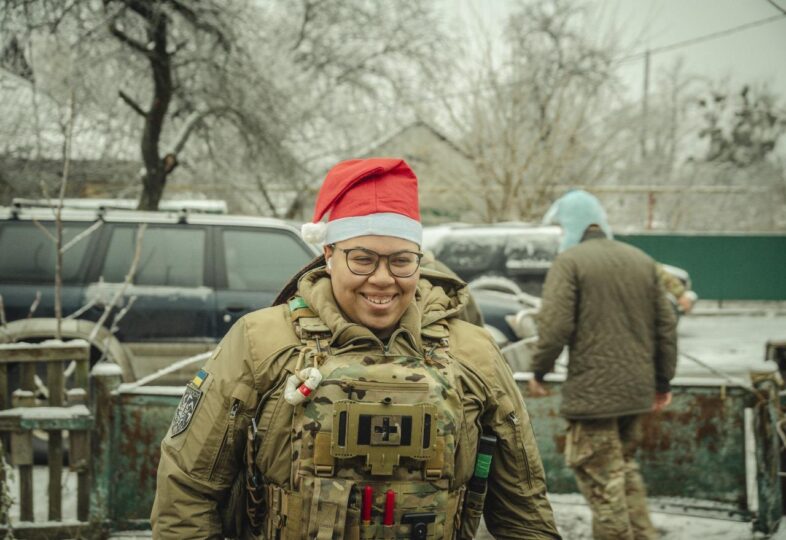
Photo: Oleksandr Zakletskyi.
— Do you want to continue on this path in the future?
– The guys are determined to finish what we started in the Serebryansky Forest. However, we understand that circumstances can change. Ideally, we’d like to work with a solid brigade and a commander who won’t treat legionnaires as expendable resources. Unfortunately, there are times when they’re deployed without proper planning and with little regard for their safety.
I’ve worked with both effective and ineffective brigade commanders. An effective one prioritizes joint planning. Since legions are typically attached to brigades, it’s essential to consult with the commander of the adjacent battalion for successful operations. I had a great partnership with Petro Skyba, the talented commander of the 63rd Brigade, from August 2023 to January 2024. Together, we made balanced decisions, and I knew I could rely on him for counter-battery operations—he would do everything possible to provide us with cover from artillery fire. He also skillfully used FPV drones to target enemy artillery and mortars.
Unfortunately, the situation changed for the worse when Skyba was replaced. The new brigade commander often made spontaneous and thoughtless decisions, which led to tragic consequences for our unit.
I believe the potential of international legions is not fully realised. They offer a platform to harness the experience of foreign armies. With a systematic approach, we can bring together personnel trained in international, including NATO, standards.
Unfortunately, some of our young officers still think in Soviet terms, often leading to a careless attitude toward personnel. According to the U.S. field manual, a platoon commander can independently decide to refuse a combat mission if it risks losing more than 30% of their troops.
So, what can foreigners bring to us? The legion can act as a hub for foreign expertise. Foreign sergeants could serve as instructors for our forces, teaching critical skills like conducting briefings.
I’ve asked graduates of our sergeant schools how they set tasks, create terrain models, and use sandboxes. Do they ensure each soldier knows their role in the trench and what to do during a counterattack? It’s essential for soldiers to receive clear instructions before heading to combat positions, preparing them for various scenarios.
Our squad, platoon, and brigade commanders often struggle with basic calculations regarding available forces and resources. This leads to assignments that are fundamentally impossible to accomplish. For example, taking a Russian strongpoint in an area with drone operations and robust aerial reconnaissance requires brigade-level forces and careful planning of diversionary manoeuvres elsewhere. Instead, we often see reckless cavalry charges.
My legion is likely the only one in Ukraine that has successfully built and maintained a battalion defence area for six months on our own initiative.
Additionally, there is no system to supply Ukrainians who speak English to the international legions through the Territorial Centre of Recruitment, which is illogical given the four international legions operating under the Ground Forces. It should be a priority for both the sergeant and officer corps to have English proficiency. My experience indicates that the position commander should be Ukrainian, as should the commanders of platoon and company strongpoints. A Ukrainian leader can set the standard, and foreigners will look to them for guidance. The battles in the Serebryanske Forest demonstrated that when the Ukrainians ran out, the defence collapsed.
International legions will only operate at full capacity with a serious approach to staffing.
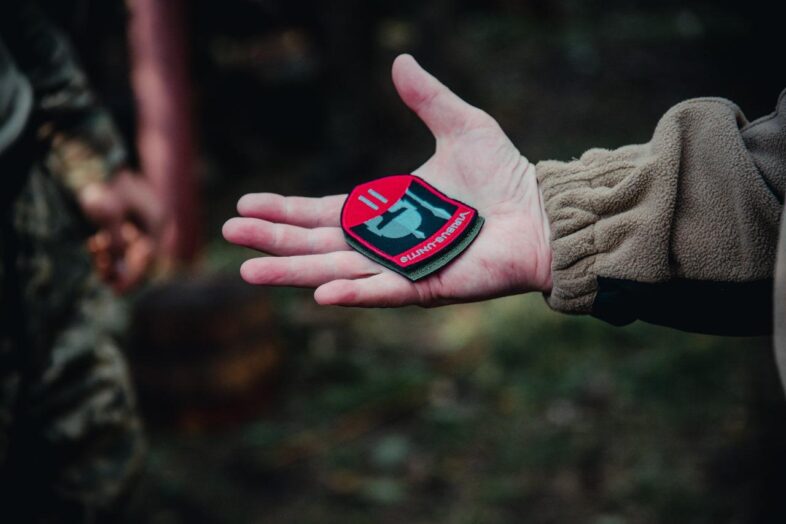
Photo: Oleksandr Zakletskyi.
The same issue applies to equipment: legions are staffed on a residual basis. I should have three special operations companies equipped with Hummers—two armed with Browning machine guns and one with an Mk-19 grenade launcher. Yet, in two years, I haven’t received a single armoured vehicle.
In the past 14 months, not a single drone funded by the state has come my way. We’ve had to rely on our own resources and the support of volunteers. All my attempts to establish an electronic warfare unit within the battalion have failed because a separate special operations battalion lacks the necessary resources. The regulations need to be updated; war demands these changes. Volunteers have purchased trench electronic warfare systems and vehicle equipment.
There’s a certain level of distrust. Foreigners are volunteers who require respect and won’t follow foolish orders. It’s easier to command Ukrainians, who are committed to serving until victory and are less likely to say “no.” A foreigner, on the other hand, can simply terminate their contract, and that needs to be taken into account.
The legion instils discipline, which is why we need brigade commanders who value personnel and prioritize both mission accomplishment and troop preservation. My defence crumbled when I lost my last company commander, Andrii Kostelnyi—he was a rock-solid leader. The troops’ morale dropped significantly, though we managed to restore it. However, in the face of targeted attacks on our positions and the lack of counter-battery support, our foreign fighters were nearing their breaking point. I reported the urgent need for restoration.
I struggled to explain to the legionnaires why they had to hold positions that would undoubtedly be destroyed. They told me, “Sir, we’re doing this out of respect for you.” I realised it was a losing battle, but we had an order from the brigade commander. I take pride in having convinced the command to pull the battalion back for restoration, highlighting the issues we were facing.
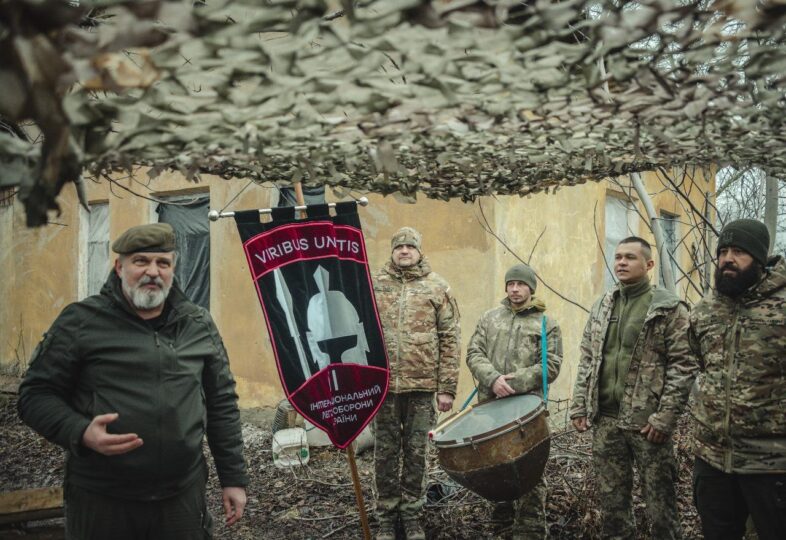
Photo: Oleksandr Zakletskyi.
— What will bring us victory in this war?
— We absolutely have the potential to win, but it requires a collective effort. This needs to be a war embraced by all of Ukrainian society and supported by the wider Western community. When everyone understands that this is a battle of civilisations, we’ll be on the right path. The potential for victory is there; we’re actively working towards it.

